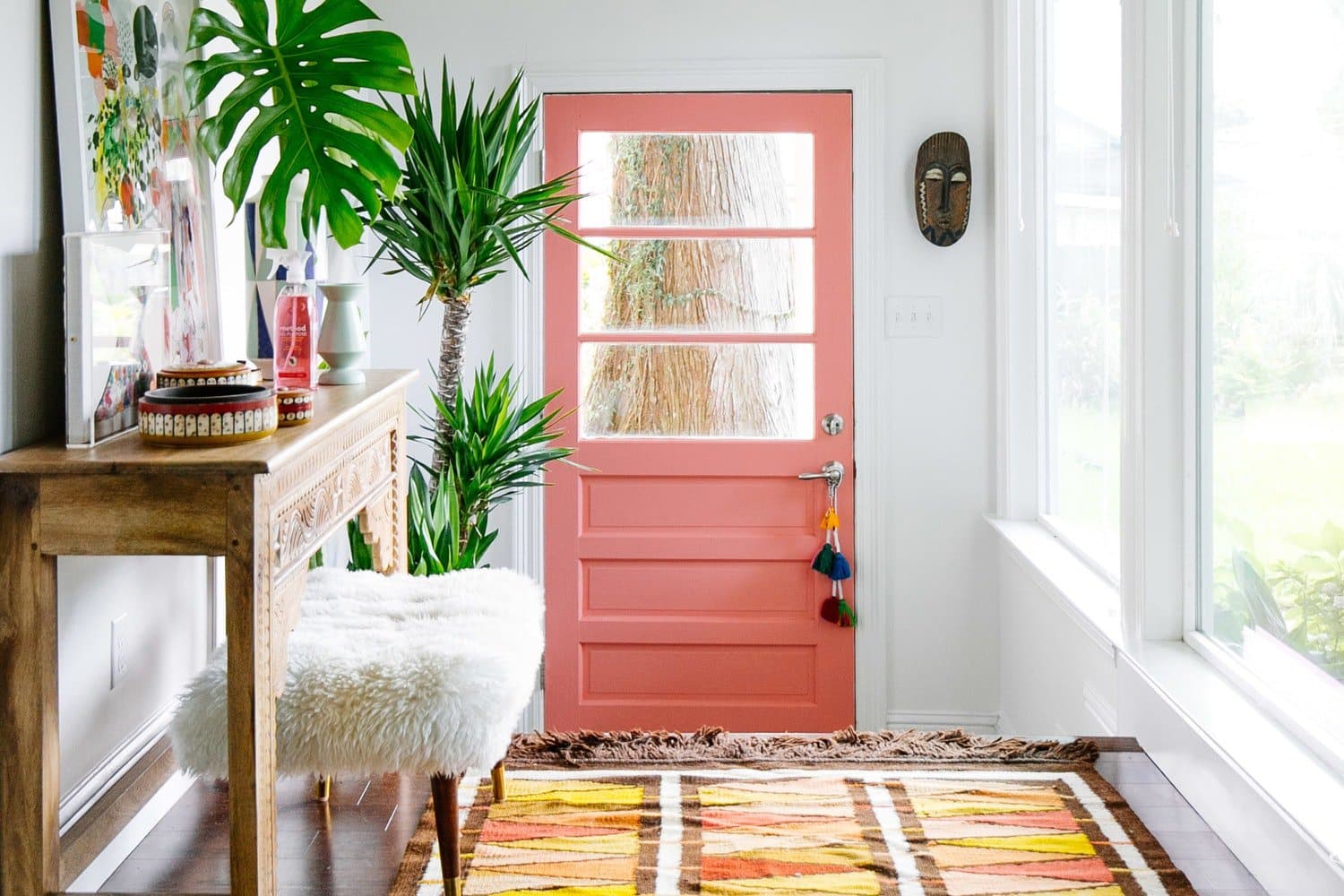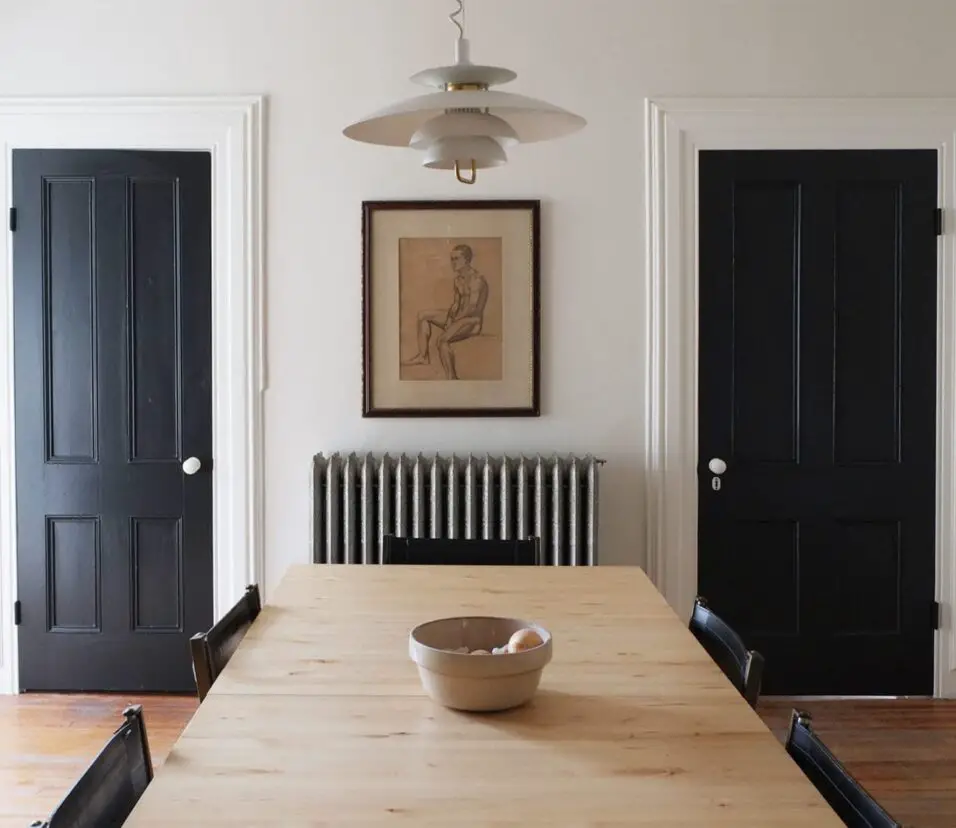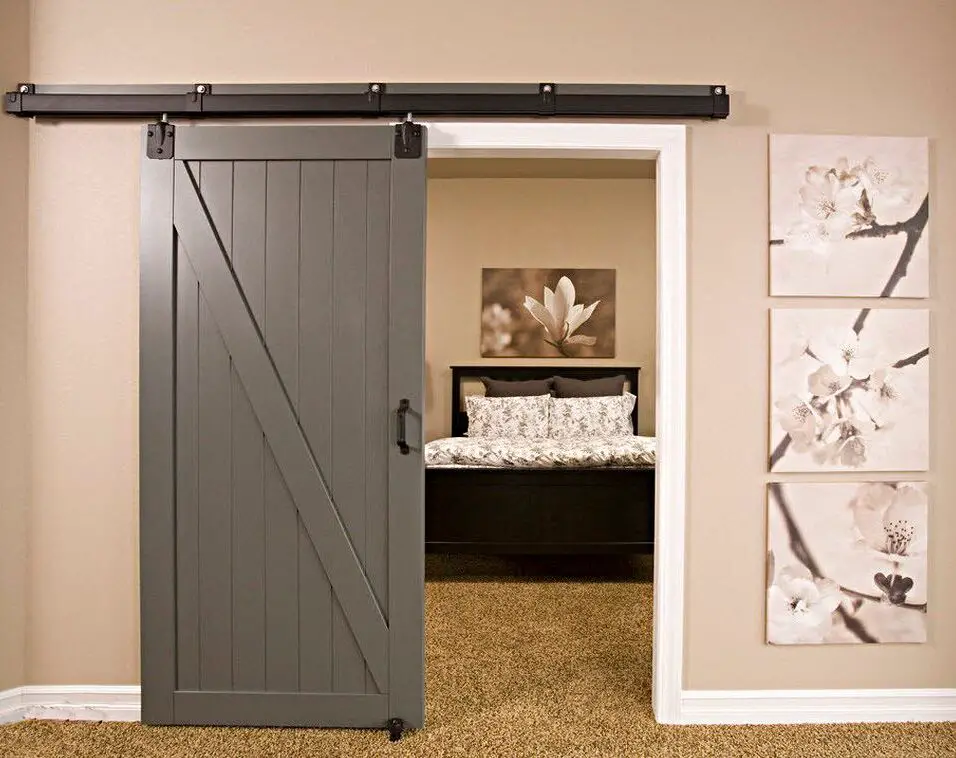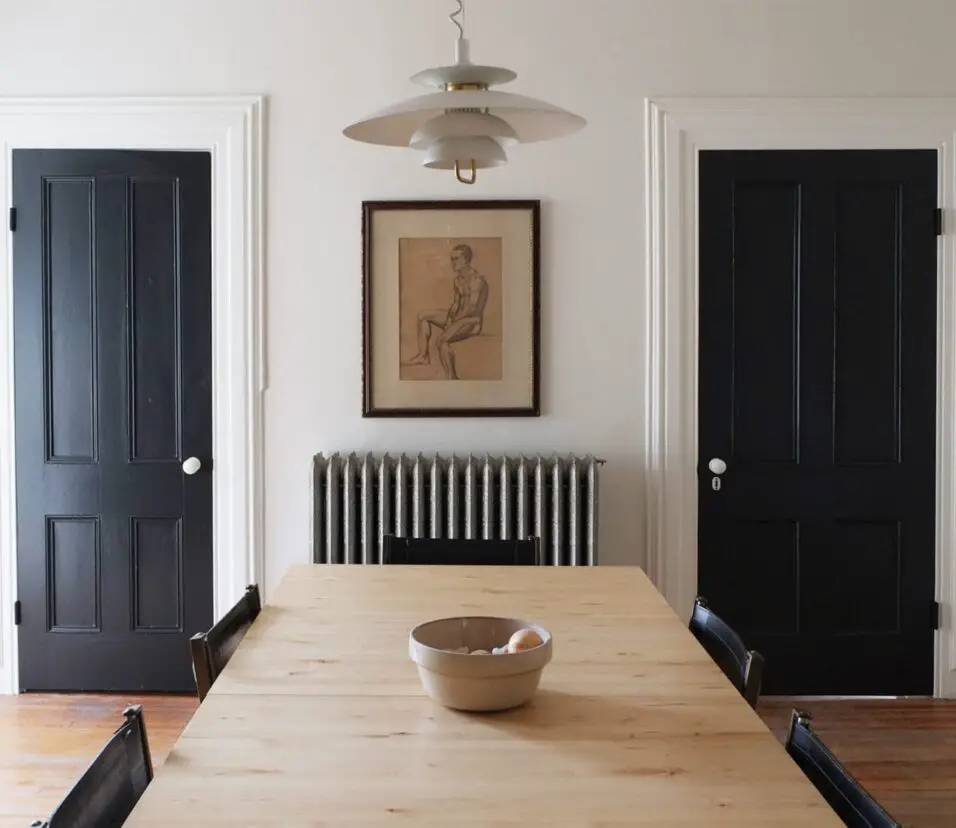What Paint To Use On Interior Doors
Introduction
What Paint To Use On Interior Doors: When it comes to interior design, one often overlooked element is the humble interior door. While doors are primarily functional, they also play a significant role in the overall aesthetic of a space. Whether you’re renovating your home or simply looking to freshen up your interior doors, choosing the right paint is crucial. The type of paint you use can determine the durability, finish, and overall appearance of your doors.
Choosing the right paint for interior doors When it comes to painting interior doors, there are several factors to consider. First and foremost, you’ll want to choose a paint that is specifically formulated for use on doors and trim. These paints are designed to withstand wear and tear, resist chipping, and provide a smooth, durable finish.
Another important consideration is the type of material your doors are made of. Different materials, such as wood, metal, or fiberglass, may require different types of paint. For example, if you have wooden doors, you’ll want to choose a paint that is suitable for wood surfaces and provides protection against moisture and UV rays. On the other hand, if you have metal doors, you’ll need a paint that is specifically formulated to adhere to metal surfaces and prevent rusting.
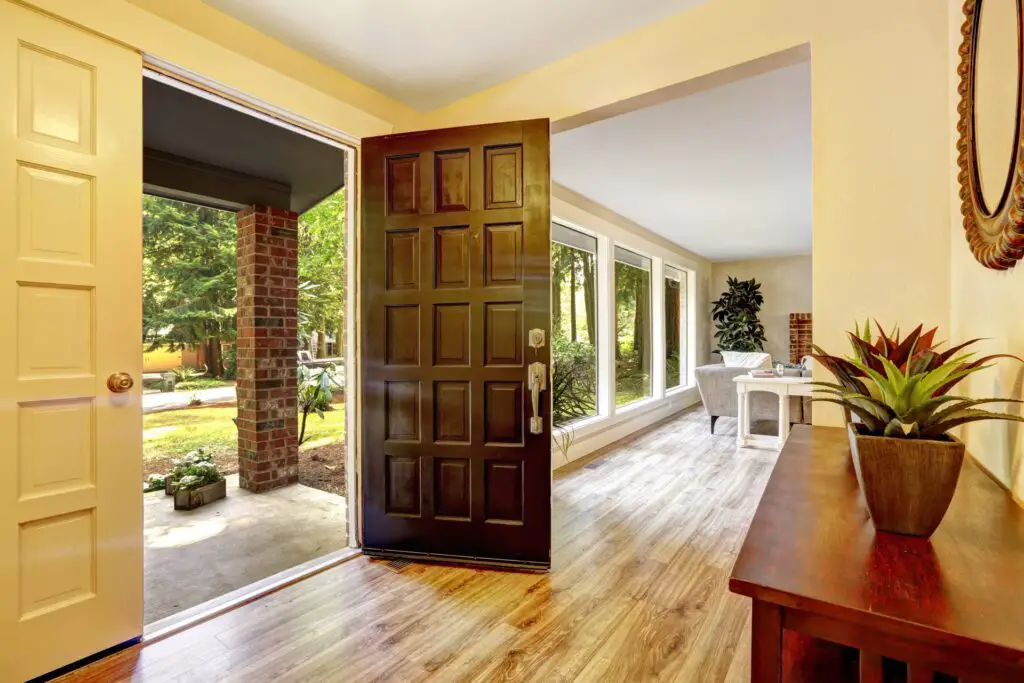
What is the best type of paint to use on interior doors?
Painting interior doors requires a different type of paint than for exterior doors, such as your front door. Exterior doors are typically painted with oil-based paint, while the best paint for interior doors generally is a latex-based or acrylic paint.
When it comes to painting interior doors, choosing the right type of paint is crucial. The type of paint you use can affect the overall appearance and durability of the finished product. With so many options available in the market, it can be overwhelming to decide which type of paint is the best for your interior doors. However, by considering a few key factors, you can make an informed decision and achieve the desired results.
Additionally, it is important to consider the durability and resistance of the paint. Therefore, it is important to choose a paint that is durable and resistant to these types of damages.
What paint can you use on internal doors?
If you’re looking for a long-lasting shine, then use a solid colour latex-based paint, which is ideal for preventing damage from fading or peeling. Epoxy paints create a glossy shine that’s extremely durable and perfect for interior doors that receive regular use.
1. Latex or water-based paint: This type of paint is a popular choice for internal doors due to its ease of use and quick drying time. Latex paint is also low in odor and easy to clean up with soap and water. It provides a smooth and even finish, making it suitable for both smooth and textured doors. However, latex paint may not be as durable as other types of paint and may require more frequent touch-ups.
Oil-based paint:
Oil-based paint is known for its durability and ability to provide a hard and glossy finish. However, oil-based paint has a longer drying time and emits strong fumes, so proper ventilation is necessary during application. It also requires mineral spirits or paint thinner for cleanup.
3. Acrylic paint: Acrylic paint is a versatile option that can be used on a variety of surfaces, including internal doors. It dries quickly and provides a durable finish that is resistant to fading and cracking. Acrylic paint is available in a wide range of colors and finishes, allowing for customization and creativity. It is also easy to clean up with soap and water. However, acrylic paint may not be as durable as oil-based paint and may require more frequent touch-ups.
4. Chalk paint: Chalk paint is a popular choice for those looking to achieve a vintage or distressed look on their internal doors. It has a matte finish and can be easily distressed or aged using sandpaper or wax. Chalk paint is also low in odor and easy to clean up with soap and water.
Should interior doors be painted gloss or satin?
Semigloss is the best paint finish for interior doors and trim. The reason being, semi-gloss can take up quite an abuse and stand up to nicks and scrapes better than any other sheen, flat or eggshell finish. The large surfaces gather dust just like your furniture.
When it comes to painting interior doors, one of the key decisions to make is whether to use gloss or satin paint. Both options have their own advantages and considerations, and the choice ultimately depends on personal preference and the desired aesthetic.
Gloss paint is known for its high sheen and reflective finish. It creates a smooth and shiny surface that can add a touch of elegance and sophistication to any room. The glossy finish also reflects light, making the space appear brighter and more spacious.
Satin paint, on the other hand, has a softer sheen and a more subtle finish. It offers a smooth and velvety texture that is less reflective than gloss paint. Satin paint is a popular choice for interior doors as it strikes a balance between a matte and glossy finish. It provides a more contemporary and relaxed look, making it suitable for various styles and settings.
Can you use interior wall paint on doors?
Can I use the same paint for doors and walls? No, you will need to use different paint for walls and doors for the most professional-looking finish. Valspar’s Sarah Lloyd says: ‘Most doors are wooden so you’ll need an undercoat and primer. This is also true for painting front doors.
Yes, you can use interior wall paint on doors. Interior wall paint is designed to be used on a variety of surfaces, including doors. However, there are a few factors to consider before using interior wall paint on doors.
Firstly, it is important to ensure that the paint you are using is suitable for the material of your door. Different types of doors, such as wood, metal, or fiberglass, may require different types of paint. It is recommended to check the manufacturer’s instructions or consult a professional to determine the best paint for your specific door material.
Secondly, you may need to prepare the door surface before applying the paint.
These steps are important to ensure that the paint adheres properly and provides a long-lasting finish.
Thirdly, consider the finish of the paint. Interior wall paint is available in various finishes, such as matte, satin, semi-gloss, or high-gloss. The finish you choose for your door will depend on your personal preference and the desired look for your space.
Lastly, it is important to apply the paint properly to achieve the desired results. Follow the manufacturer’s instructions for application, including the recommended number of coats and drying times between coats. Using the appropriate tools, such as brushes or rollers, can also help ensure a smooth and even application of the paint.
Do interior doors need special paint?
Choose paint recommended for interior doors, such as types with a durable gloss or semi gloss sheen that makes them easy to clean. If possible, paint in a well-ventilated area or use a fan to circulate the air. Before painting, clean the door with a degreasing cleaner.
Yes, interior doors do require special paint. When it comes to painting interior doors, it is important to choose the right type of paint that is specifically designed for this purpose. Using regular wall paint on interior doors can lead to a variety of issues and may not provide the desired results.
Semi-gloss paint is a popular choice for interior doors as it offers a good balance between durability and aesthetics.
High-gloss paint, on the other hand, provides an even shinier finish and is highly resistant to wear and tear.
Are there any specific brands of paint that are recommended for painting interior doors?
When it comes to painting interior doors, there are several specific brands of paint that are highly recommended for achieving the best results. One of the top brands that professionals often turn to is Sherwin-Williams. They offer a wide range of high-quality paints that are specifically formulated for interior doors. Their paints are known for their durability, smooth finish, and excellent coverage.
Another popular brand that is often recommended for painting interior doors is Benjamin Moore. They have a variety of paint options that are specifically designed for doors and trim. Their paints are known for their excellent adhesion, durability, and resistance to chipping and peeling.
Should I use a specific type of primer before painting interior doors?
Yes, it is highly recommended to use a specific type of primer before painting interior doors. Primer serves as a preparatory coat that helps the paint adhere better to the surface of the door. It also helps to create a smooth and even finish, as well as improve the durability and longevity of the paint job. Using a primer can also help to prevent any stains or discoloration from bleeding through the paint.
When choosing a primer for interior doors, it is important to select one that is suitable for the type of material the door is made of. For example, if the door is made of wood, it is best to use a wood primer. If the door is made of metal, a metal primer would be more appropriate. There are also universal primers available that can be used on a variety of surfaces.
Before applying the primer, it is important to properly prepare the surface of the door by cleaning it and sanding any rough areas. This will help the primer adhere better and ensure a smooth finish. It is also important to follow the manufacturer’s instructions for the primer, including the recommended drying time before applying the paint.
Are there any special techniques or tools that I should use when painting interior doors?
When it comes to painting interior doors, there are a few special techniques and tools that can help you achieve a professional-looking finish. One important technique is to properly prepare the door surface before painting. This includes cleaning the door to remove any dirt or grease, sanding it to create a smooth surface, and filling in any holes or imperfections with wood filler. By taking the time to prepare the door properly, you can ensure that the paint adheres well and the final result is smooth and even.
Another technique to consider is using a high-quality brush or roller. A brush with synthetic bristles is often recommended for painting doors, as it allows for smooth and even application of the paint. Additionally, using a roller with a medium nap can help you achieve a consistent finish on larger areas of the door. It’s also important to use long, even strokes when applying the paint to avoid streaks or brush marks.
How long does it typically take for the paint to dry on interior doors?
When it comes to drying time for paint on interior doors, several factors come into play. The type of paint you use, the thickness of the coat, and the environmental conditions can all affect the drying time. In general, most interior door paints will dry to the touch within 1 to 2 hours. However, it is important to note that this is just the initial drying time and the paint may still be susceptible to smudging or damage.
To speed up the drying process, you can use fans or open windows to improve air circulation and reduce humidity. Additionally, using a paint with a faster drying time or adding a drying accelerator can also help expedite the process.
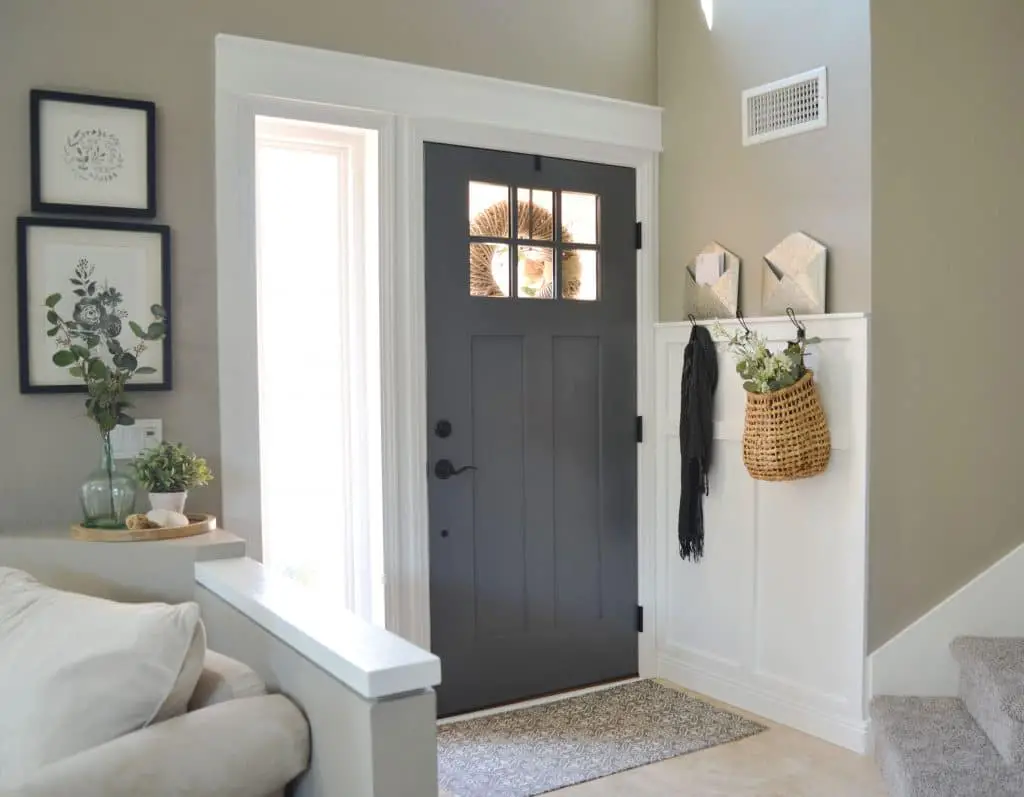
Conclusion
Choosing the right paint for your interior doors is crucial in achieving a professional and long-lasting finish. After considering various factors such as the type of door material, desired finish, and personal preferences, it is clear that using a high-quality paint specifically designed for interior doors is the best option. This ensures that the paint adheres well to the surface, provides excellent coverage, and withstands everyday wear and tear.
One of the key considerations when selecting paint interior doors is the type of door material. Whether your doors are made of wood, metal, or composite materials, it is important to choose a paint that is suitable for that specific surface. For example, if you have wooden doors, using a paint that is formulated to adhere well to wood and has good resistance to moisture is essential. On the other hand, if your doors are made of metal, opting for a paint that offers excellent rust protection and durability is crucial.
Choosing the right paint for your interior doors is essential for achieving a professional and durable finish. Considering factors such as the door material, desired finish, and personal preferences will help you make an informed decision. By using a high-quality paint specifically designed for interior doors, you can ensure that your doors not only look great but also withstand the test of time.



